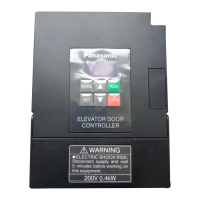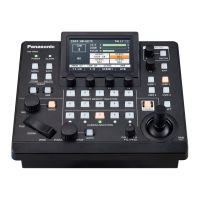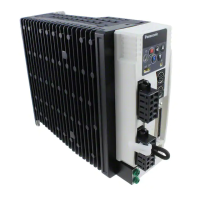11.2 Operation of Home Return
11-11
Operation of input control/output control signals
• When the home return request (corresponding bit allocated to UM00198 to UM0019D) turns
on by a user program, the home return will start. The home return request will be enabled at
the edge where the contact turns on.
• The BUSY flag (corresponding bit allocated to UM00090 to UM00095), which indicates that
a requested operation is being controlled, will turn on when the control starts, and it will turn
off when the operation completes.
• The home return done flag (corresponding bit allocated to UM0009C to UM000A1), which
indicates the completion of operation, will turn on when the current operation is completed,
and it will be held until the next positioning control, JOG operation, or home return starts.
Allocation of unit memories
Signal name
Axes
1-16
Axes
17-32
Axes
33-48
Axes
49-64
Axes
1-16
Axes
17-32
Home return start request UM00198 UM00199 UM0019A UM0019B UM0019C UM0019D
BUSY flag UM00090 UM00091 UM00092 UM00093 UM00094 UM00095
Home return done flag
UM0009C UM0009D UM0009E UM0009F UM000A0 UM000A1
(Note 1): Flags or request signals for 16 axes are allocated to each unit memory (1 word) in the above table. When
the value of each bit is 1, it turns on. When the value of each bit is 0, it turns off.
bit no.
15
0
8 7
9 1816
● ● ● ● ● ●● ● ● ● ● ●
Axis no.
25
17
2432
● ● ● ● ● ●● ● ● ● ● ●
41
33
4048
● ● ● ● ● ●● ● ● ● ● ●
57 495664
● ● ● ● ● ●● ● ● ● ● ●
• In the case of the DOG method 1, the operation stops once after the
detection of the leading edge of a near home input (HOME) as the home
return positioning control mode (Method33/34) of Servo Amplifier A6B/A5B
is used. The home position is searched at a home return creep speed again,
and the operation stops when the leading edge of the first home position (Z
phase) is detected.

